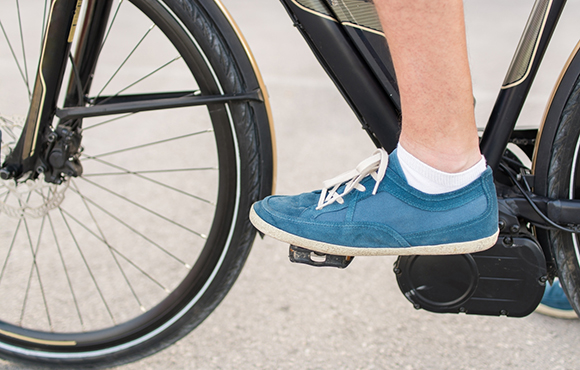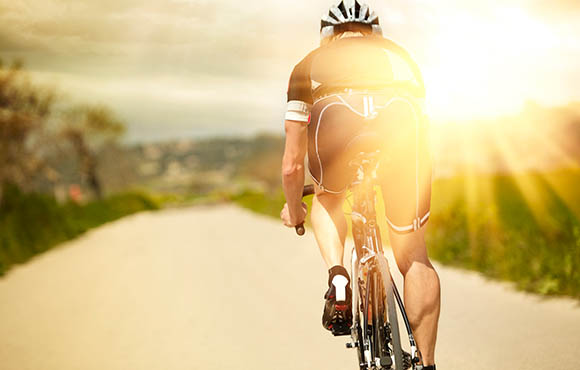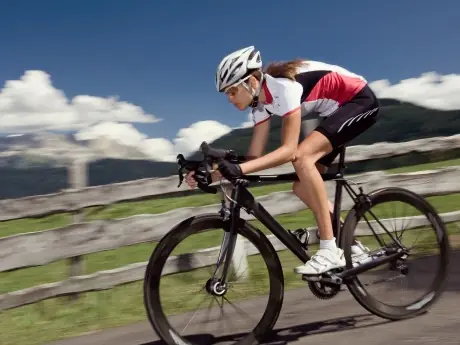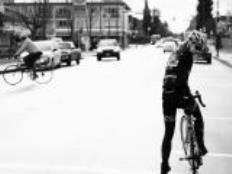What is chamois cream, and how do I use it?
1 of 11
Riding thousands of miles on your bike each year can take a toll on your nether regions. One way to combat these uncomfortable effects is to use chamois cream—an anti-bacterial substance that helps reduce friction and chafing between your undercarriage, your bike shorts and your saddle. Chamois cream, as the name implies, usually comes in a cream form and can be applied to the chamois (the pad in your shorts or bibs) itself or directly to the skin. We'll let you experiment and decide which works best.
Find:
Your Next RideCan I use flat pedals on a road bike?
2 of 11
Of course! Technically both flat pedals and clipless pedals are compatible on all road bikes. If you aren't comfortable clipping in, flat pedals are a great alternative. They're more versatile and can also be used with casual street shoes. If you're looking for something more performance oriented, flat pedals with toe cages will give you more control throughout your pedal stroke. If you're doing 30-mile rides or longer for exercise, we'd suggest eventually easing into a clipless setup.
Find:
Your Next RideShould I wear underwear with my bibs?
3 of 11
No! No, no, no! This one is easy—never wear underwear with your bibs or cycling shorts as they are designed with a specific fabric that reduces friction and increases moisture wicking. Adding a layer of cotton between your skin, cycling shorts and the saddle is a recipe for disaster. And while we're on the topic of bibs, make sure the bib straps go under your jersey, not over. You're not a lumberjack.
Find:
Your Next RideWhy are my hands going numb?
4 of 11
Unfortunately, this answer isn't that straightforward. There are several reasons your hands may be going numb when out on a ride. Poor alignment in your shoulder, elbows or wrists can compress a nerve and cause a tingling feeling in your hand that may take several hours to dissipate. How can you prevent it? Regularly changing your hand position from the drops to the hoods or tops is a good way to help take unnecessary pressure off these nerves. For more ways to keep your hands from going numb, click here.
Find:
Your Next RideHow can I make myself poop before a ride?
5 of 11
Let's face it, having to poop in the middle of a long ride is inconvenient and uncomfortable (just ask Tom Dumoulin). If you're worried about feeling the urge mid-ride, there are ways to help yourself take care of business before you begin. Many cyclists use a cup of coffee to get their bowels moving, but any warm liquid will likely do the trick. Also, a short warm up like jumping jacks or stair repeats can help loosen everything up and make it easier to use the bathroom. Finally, waking up earlier than usual and eating something will give your body more time to take care of business. At the end of the day, it comes down to whatever your body responds to the best.
Find:
Your Next RideWhen should I use a high or low gear?
6 of 11
This is a question even the most veteran cyclists argue over, but there are some general guidelines to follow when deciding how to shift. Most road bikes have a 10- or 11-speed cassette on the back, and two chainrings on the front. This gives you either 20 or 22 different gearing combinations to choose from when riding. A general rule of thumb is to shift as needed to keep your cadence consistent. If you're heading up a hill, you'll need to shift down (bigger cog on the cassette) to keep your momentum. Conversely, if you're pedaling down a hill, you'll need to shift up into a harder gear (smaller cog on the cassette). Some people naturally pedal with a slower or faster cadence, so it ultimately depends on the person.
Find:
Your Next RideShould I ride when it's cold outside?
7 of 11
It depends. It's perfectly acceptable to head out the door for a ride in less-than-optimal conditions, but be aware of weather forecasts. There's nothing worse than being stranded on the side of a road in a downpour or snowstorm. If you're worried about being too uncomfortable on a chilly morning ride, start with some clothing options you can shed as the day warms up. Remember, start your ride a little on the cold side. If you're warm just standing around, you'll be uncomfortably hot once you start pedaling.
Find:
Your Next RideWhat happens if I get a flat tire?
8 of 11
Flat tires happen, and there's no need to panic. But before you find yourself stranded with a flat tire, make sure you know how to change out a punctured tube and are carrying all the tools necessary to do so: a couple extra tubes, a hand pump or CO2 inflator and a couple tire levers. To learn how to change a punctured tube, click here.
Find:
Your Next RideHow can I get over the fear of riding on roads?
9 of 11
There's no denying it, sharing the road with traffic can be dangerous and intimidating. The hazards can be diminished, though, by taking a proactive approach. Always follow the rules of the road, be aware of your surroundings and always ride with traffic—not against it. Also, wearing high visibility cycling clothing and using both headlights and taillights will alert drivers of your presence. Ease into it—add one new road at a time until you feel comfortable exploring at distance. Also avoid high-trafficked roads or busier times of day if possible.
Find:
Your Next RideWhy is my chain squeaking?
10 of 11
Just like a car, your bike needs to be maintained on a regular basis. If you go too long without cleaning and lubing your chain, you'll start to notice a squeaking sound that will get worse over time. First, wipe your chain down with a shop towel (or a piece of an old T-shirt), then use a bottle of bike-specific lube (not WD-40) and apply a drop of lube to each roller and pin. Spin the crank slowly as you work your way around, then wipe away the excess lube with a clean towel. Don't overdo it—you should only lube your chain once a week or every 200 miles.







Discuss This Article